
Frequency bands (2G, 3G, 4G) used by operators, during the Mobile Network Benchmarking activity, is presented in Figure 1.
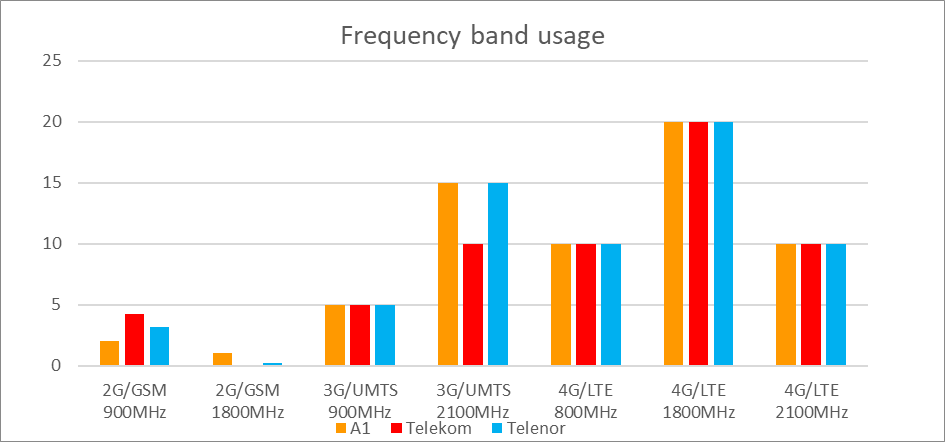
Fig. 1. Frequency bands used by operators
2G/GSM: All three operators used the 900 MHz band. The 1800 MHz band was used by A1 Srbija Srbija and in a smaller extent by Telenor.
3G/UMTS: The 900 MHz band was used by all three operators. All three operators used the 2100 MHz band, Telekom without one UARFCN=10688 this year.
4G/LTE: All three operators used the 800 MHz and 1800 MHz bands, additionally 2100MHz was utilized by all three operators this year, including Telekom Srbija for which 2100MHz was not available in previous campaigns. In Large Cities and Medium Cities all three operators were utilizing LTE-CA with 30-40 MHz mainly, with up to 50 MHz for A1 Srbija in some spots. In Small Cities, Telenor utilized LTE-CA 40 MHz to the biggest extent. A1 Srbija and Telekom used LTE 40 MHz to some extent on Roads.
Carrier Aggregation (CA) usage depends on the network configuration and the amount of data sent during the test. In Large Cities, A1 Srbija and Telekom had reached 97% usage of LTE CA, Telenor had over 95%. In Medium Cities, all three operators with over 95% of LTE CA usage. On Highways the usage of LTE CA was highest for Telekom with 94%, A1 Srbija second with 86% and Telenor last with 68%. On the Main Roads usage of LTE CA was highest for A1 Srbija with 70%, Telekom second with 53% and Telenor last with 40%. On Rural Roads the LTE CA utilization was lowest with 44% for A1 Srbija, 37% for Telekom and 26% for Telenor.
Charts with mobile coverage statistics show the distribution of radio signal levels for 2G/GSM, 3G/UMTS and 4G/LTE technologies according to criteria defined by RATEL for the purpose of the Benchmarking campaign, are presented below in Figure 2:
| 2G/GSM signal level | 3G/UMTS signal level | 4G/LTE signal level | |
| Poor | L<-95dBm | L<-105dBm | L<-110dBm |
| Fair | -95dBm ≤ L < - 85dBm | -105dBm ≤ L < -95dBm | -110dBm ≤ L < -100dBm |
| Good | -85dBm ≤ L < -65dBm | -95dBm ≤ L < -65dBm | -100dBm ≤ L < -80dBm |
| Excellent | L ≥ -65dBm | L ≥ -65dBm | L ≥ -80dBm |
2G/GSM network coverage is presented in Figure 3
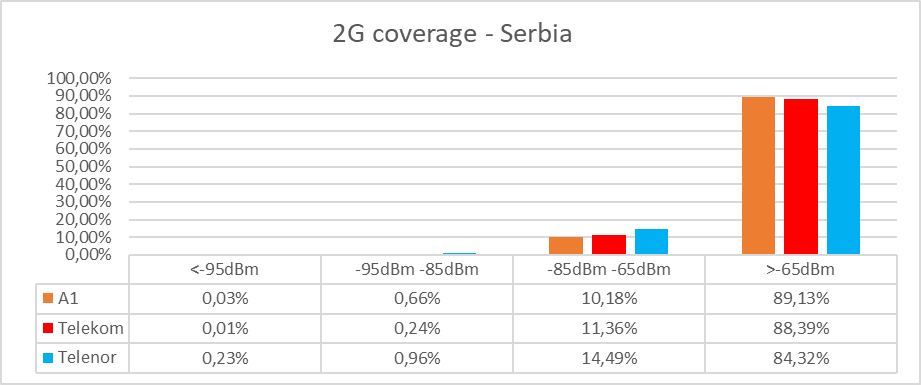
Fig. 3. 2G/GSM coverage
2G/GSM network coverage maps for all three mobile operators are shown in Figure 4.
A1 Srbija
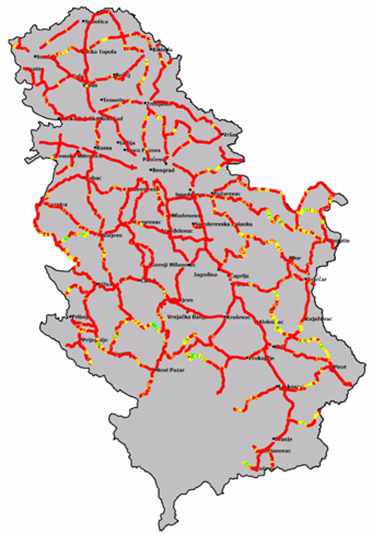
Telekom Srbija
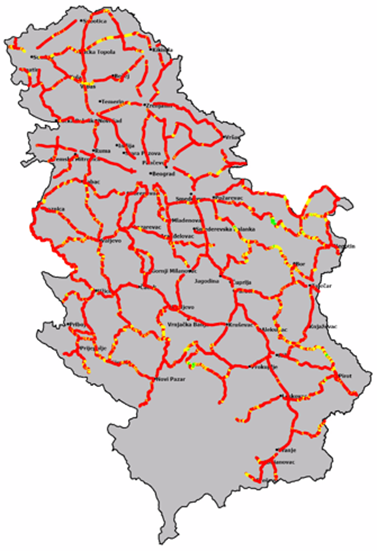
Telenor
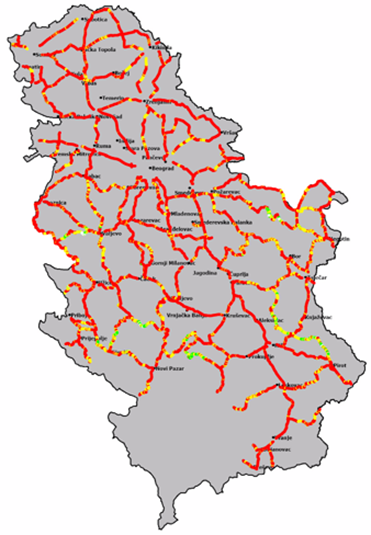
Fig. 4. 2G/GSM network coverage maps
The best coverage of 2G network was achieved by A1 Srbija with Telekom Srbija right behind. Telenor had slightly worse 2G coverage and lower signal quality, comparing to A1 Srbija network.
3G/UMTS network coverage is presented in Figure 5.
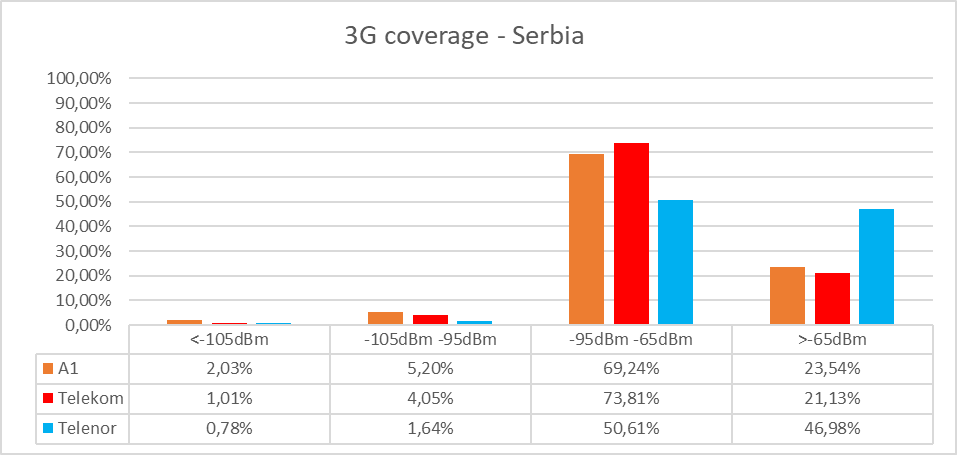
Fig. 5. 3G/UMTS coverage
3G/UMTS network coverage maps for all three mobile operators are shown in Figure 6.
A1 Srbija
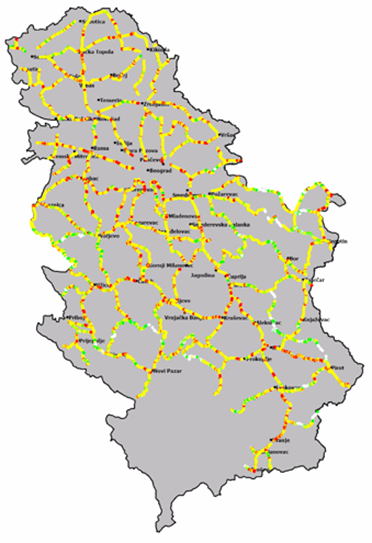
Telekom Srbija
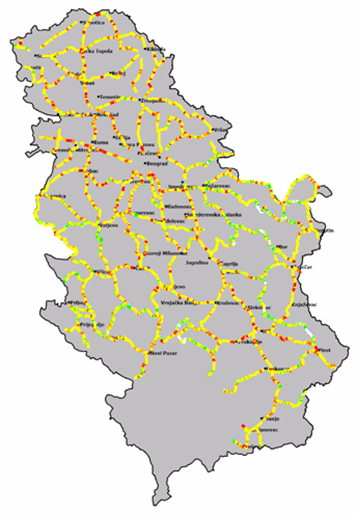
Telenor
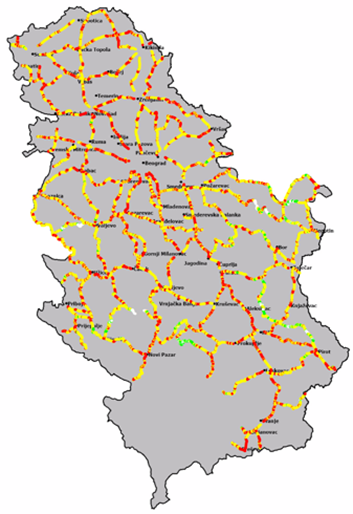
Fig.6. 3G/UMTS network coverage maps
The network with the best 3G coverage was Telenor again this year. This result was caused by the widest UMTS 900 MHz footprint, with a well-developed UMTS 900 MHz coverage outside of cities. Telekom and A1 Srbija almost at pair in excellent signal strength category.
4G/LTE network coverage is presented in Figure 7.

Fig. 7. 4G/LTE network coverage
4G/LTE network coverage maps for all three mobile operators are presented in Figure 8.
A1 Srbija
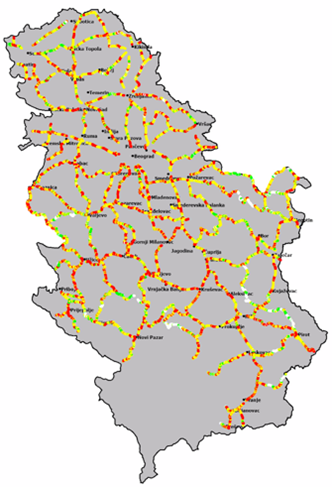
Telekom Srbija
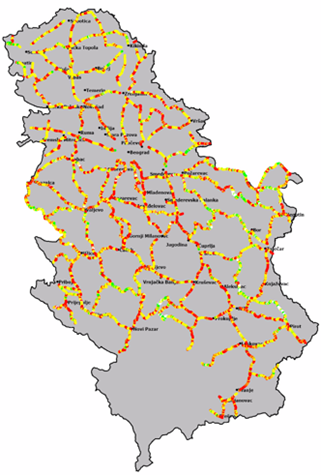
Telenor
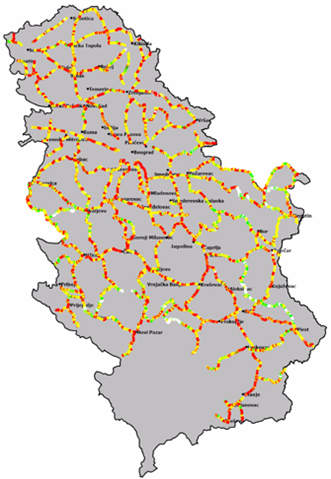
Fig. 8. 4G/LTE network coverage maps